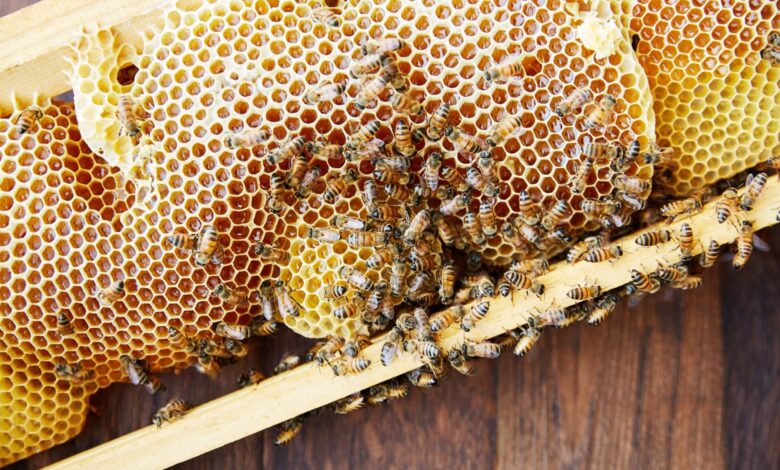Development of methods of beekeeping

Development of methods of beekeeping

More or less in their current form, honey bees have been around for a lot longer than people have. There is evidence that men have sought their honey since the very earliest human records. Several early stone-age cave drawings purport to depict men raiding beehives. Some claim they can even make out the man carrying a torch that is blazing in some of the images, showing that smoke was being used to calm the bees even at this early date.
It must have been discovered in ancient times that if a hollow log containing a bees’ nest was moved to a convenient location close to home, the bees would continue to live in it. It must have also been discovered that there was a good chance that if a swarm of bees was introduced to a hollow log, earthenware pot, or straw skep in the evening, they would establish a home there. The use of beeswax and honey is evident in all ancient civilizations in Europe and Asia. The Old Testament has several references. Beeswax and honey tributes to the deceased have been found in ancient Egyptian tombs that have been explored by researchers. The offerings are astonishingly well preserved, especially the wax.

Many treatises on the craft of beekeeping were written by the ancient Greeks and Romans, and some of them have survived to the present day. The system they outline is comparable to one that is still in use today in less developed regions of Europe and portions of Africa, and it was practically ubiquitous until around 150 years ago. The beekeeper that employs this archaic method begins by collecting a swarm, which he then shakes from its branch into a box or basket while controlling it if required with smoke. He places the bees on a board that slopes higher in the evening, leading up to the entrance to his beehive, which is just a hollow container with a capacity of ten to twenty liters that is adequately waterproof and constructed of wood, straw, earthenware, or whatever is available. The beekeeper does not interfere other than to keep watch over the bees as they settle in. The first stock of bees is likely to produce additional swarms in their second season, which the beekeeper will attempt to catch and add to his existing stocks.

The beekeeper evaluates his stock at the conclusion of each summer season. He chooses to sacrifice the hives that are highly laden with honey and the ones that are very light and not flourishing. He leaves the middle-weight animals to overwinter in the hopes that they will make it to the following season. The bees are forced out of the hives to be sacrificed by using a lot of smoke, and all the combs within are then removed for harvesting. The honey is extracted, and the leftover material is melted down to create beeswax.
This system wastes a lot of resources. The highest-yielding colonies are killed, along with their brood nests. However, frequently the smoke utilized in this operation was that of burning sulphur which killed the workers. The worker bees driven off may obtain admission to some of the other hives and supplement their numbers. Many innovations in agricultural practice were being introduced in Western Europe and America in the eighteenth and nineteenth centuries, and those beekeepers with curious minds started to think about how beekeeping may also be improved. Accurate knowledge of the requirements and behavior of the species being raised is necessary for this advancement. The understanding of bees was expanding quickly at the time.






